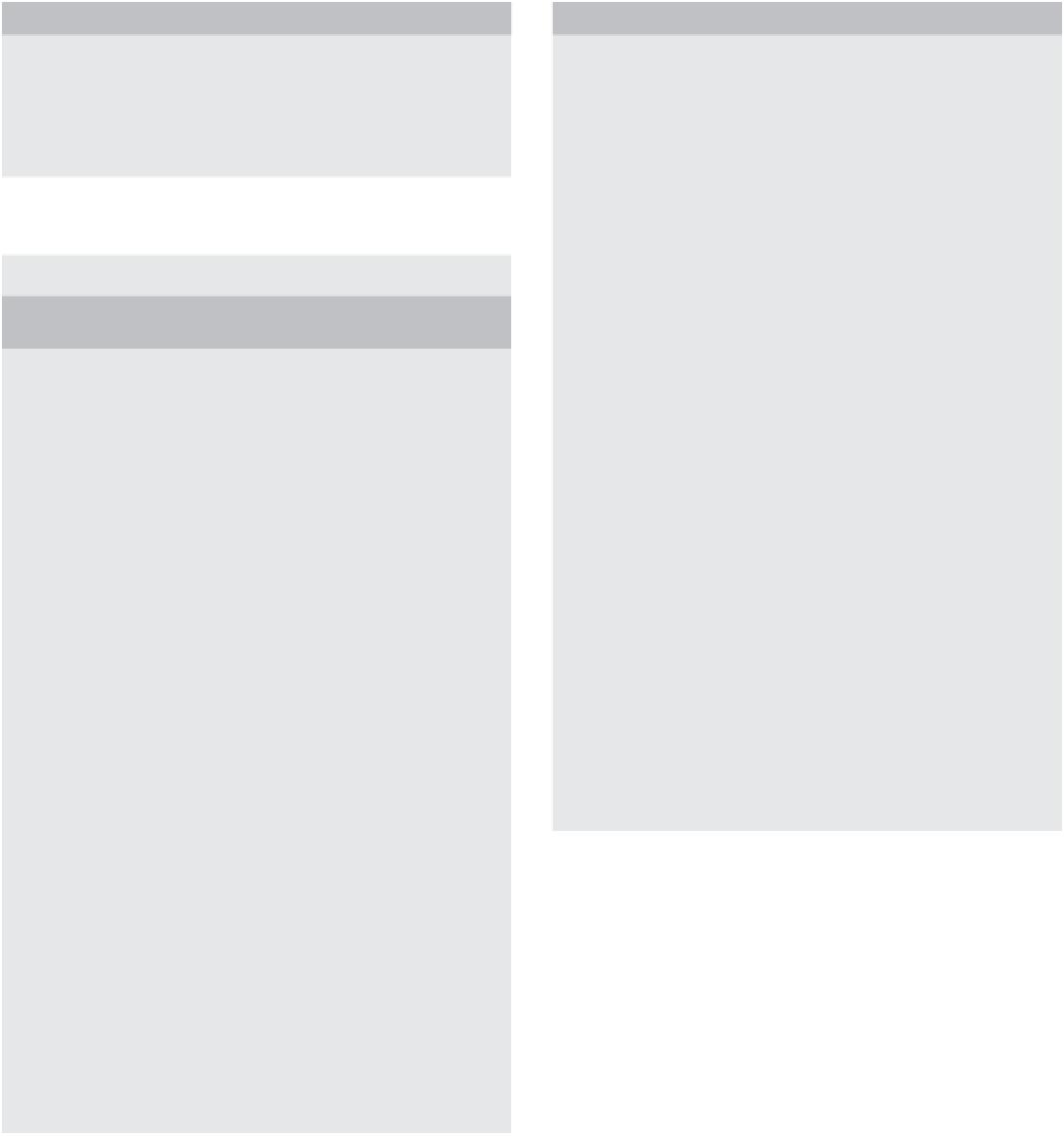Biomedical Engineering Reference
In-Depth Information
Box 13.1
Fitzpatrick Classifi cation of Skin Type
I. Always burns, never tans
II. Burns easily, tans minimally with diffi culty
III. Burns moderately, tans moderately and uniformly
IV. Burns minimally, tans moderately and easily
V. Rarely burns, tans profusely
VI. Never burns, tans profusely
Box 13.2
World Classifi cation of Skin Type
1. European/Caucasian: white:
a. Pale, cannot tan, burns easily, no postinfl ammatory
pigmentation
b. Tan, rarely burns, rarely develops postinfl ammatory
pigmentation
c. Deep tan, never burns, develops postinfl ammatory
pigmentation
2. Arabic/Mediterranean/Hispanic: light brown:
a. Pale, cannot tan, burns easily, no postinfl ammatory
pigmentation
b. Tan, rarely burns, rarely develops postinfl ammatory
pigmentation
c. Deep tan, never burns, develops postinfl ammatory
pigmentation
3. Asian: yellow:
a. Pale, cannot tan, burns easily, no postinfl ammatory
pigmentation
b. Tan, rarely burns, rarely develops postinfl ammatory
pigmentation
c. Deep tan, never burns, develops postinfl ammatory
pigmentation
4. Indian: brown:
a. Pale, cannot tan, burns easily, no postinfl ammatory
pigmentation
b. Tan, rarely burns, rarely develops postinfl ammatory
pigmentation
c. Deep tan, never burns, develops postinfl ammatory
pigmentation
5. African: black:
a. Pale, cannot tan, burns easily, no postinfl ammatory
pigmentation
b. Tan, rarely burns, rarely develops postinfl ammatory
pigmentation
c. Deep tan, never burns, develops postinfl ammatory
pigmentation
Table 13.1
Lancer Ethnicity Scale
LES Skin
Ty p e
Fitzpatrick
Skin Phototype
Background Geography
European
LES Type 3
Type II
Ashkenazy Jewish
LES Type 1
Type I
Celtic
LES Type 2
Type III
Central, Eastern European
LES Type 1
Type I-II
Nordic
LES Type
1-2
Type I
Northern European (general)
LES Type
3-4
Type III Southern European, Mediter-
ranean
North American
LES Type 3 Type II Native American (including
Inuit)
Asian
LES Type 4 Type IV Chinese, Korean, Japanese,
Thai, Vietnamese
LES Type 4 Type IV Filipino, Polynesian
Latin/Central/South American
LES Type 4 Type IV Central, South American
Indian
African
LES Type 5 Type V Central, East, West African
LES Type 5 Type V Eritrean and Ethiopian
LES Type 5 Type V North African, Middle East
Arabic
LES Type 4 Type III Sephardic Jewish
Risk Factors: LES Type 1, very low risk; LES Type 2, low risk; LES Type 3,
moderate risk; LES Type 4, signifi cant risk; LES Type 5, considerable risk.
a
The LES is a system to calculate healing effi cacy and times. To calculate
individual's skin on the LES, fi nd the LES skin type numbers for each of his
or her four grandparents. Add the numbers together and divide this total by
four. The lower LES skin type, the better skin healing should be after laser
surgery and the less risk there is of scarring, keloids, erythema, discolor-
ation, and uneven pigmentation.
Abbreviation
: LES, Lancer Ethnicity Scale.
Source
: Adapted From Ref. 13.
of pigmented condition, including melasma, lentigines, sebor-
rheic keratoses, and ABNOMs (Hori's nevus) is particularly
popular, due to the condition's more frequent occurrence in
Asia and the associated social stigma. In skin rejuvenation,
nonablative procedures are more popular than ablative treat-
ment. Fractional laser resurfacing is well received in Asia with
a growing number of patients seeking treatment. Additionally,
since Asian skin pigments easily and postinfl ammatory hyper-
pigmentation (PIH) is a common problem, preferred devices
tend to be those that offer a gentler treatment (5,6).
The increase in epidermal melanin in Asian skin compared
with that of white skin has been claimed to be a limiting factor
for obtaining benefi cial results and to be a critical factor for
developing adverse sequelae in dermatological laser treatment.
Patients with nonwhite skin are generally less responsive to
treatment because of competition from epidermal melanin for
the laser energy.
clinical applications
Current laser or light-source systems can be classifi ed accord-
ing to the desired target of destruction (see chap. 1). Similar
to the clinical applications on white complexions, the indica-
tions of laser therapy in Asian skin include vascular-specifi c
lasers, laser treatment for hypertrophic scars, keloids and
striae, pigment-specifi c lasers, laser hair removal, ablative
laser resurfacing, and nonablative and ablative fractionated
resurfacing (11,16,17).
In general, these applications are well established in Asia,
with devices having been available for many years. Treatment
vascular-specific lasers
The indications for laser treatment of microvasular lesions are
similar in Asians and Caucasians. Oxyhemoglobin, with its
major absorption peaks at 418, 542, and 577 nm, is the major
chromophore in cutaneous microvessels (12). Various lasers
and intense pulsed light (IPL) systems are available, producing

























